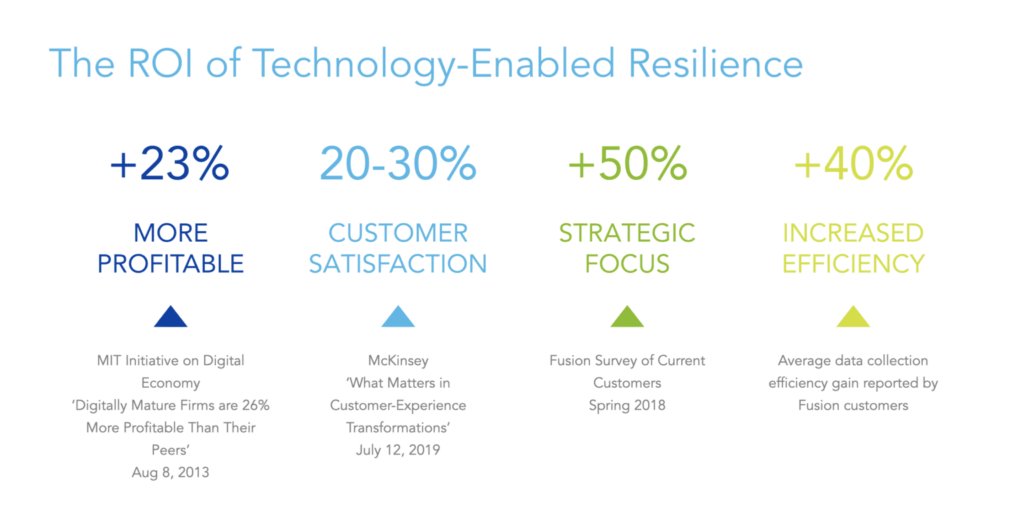
Every crisis has 2 sides – opportunity and danger.
No matter how difficult the circumstances, no matter how dangerous the situation, at the heart of a crisis lies a tremendous opportunity. As leaders, this has powerful implications for how we manage, make decisions, and enable our teams in this frontier of change. Many leaders are asking, ‘How do I effectively steer my organization through the threats and opportunities that present themselves in the wake of a crisis?’
As trusted leaders, we know how powerful it is to have accurate information to support quality decisions and inform clearly defined next actions. A single, customer-focused view of the enterprise empowers teams to work together seamlessly and ensures your objectives move forward when and how they should.
But a trusted view of your operation is hard to come by.
As you think about your own organization:
- How often are you finding incomplete or inaccurate data?
- How many times do you need to go to multiple people to get the information you need?
- How often are you finding you need to change what you are collecting?
The organic functional silos in any institution result in a disconnected, chaotic, and inaccurate view of your enterprise, which makes it very likely you are making decisions based on a limited view instead of the full picture.
So how do we do better, navigating in uncertain times, serving the lifeblood of our business – our customers – and protecting the health, safety, and livelihoods of our people?
Business leaders are charting the path to a new business as usual – focused on protecting revenue, building efficiency, and increasing productivity for their teams. Leaders are looking to:
- Mitigate Risk : understand the fast-moving changes in the risk landscape and drive a new focus on situational awareness.
- Stabilize Operations : build a single operating view of the enterprise, critical services, supporting processes, dependencies, issues, and next steps
- Adapt and Evolve: monitor how customer needs and behaviors have changed by leveraging advanced technologies, analytics, and insights that drive new products, services, and operating models.
- Prepare for What’s Next : grasp the impact of the absence of a resiliency strategy, organizations realize the need for cross-cutting insights, agility, a well-rehearsed plan, and a prepared team.
We are not there yet. In a 2020 E&Y Global Risk survey of cross-industry board members, 79% state that their organizations are not very well-prepared to deal with the crisis.
Only 16 percent felt their response plans worked well.
The Road to Resilience
Leaders need to ask themselves three critical questions to unlock the potential of their business and build agility to make the transformative decisions necessary in these changing times:
- How does our business work?
- How might it break?
- How can we prepare, protect, and respond?
These core questions will inform and direct everything else you do as an organization.
Forward-thinking organizations have been answering these questions by working collaboratively and building an integrated, cross-cutting view of their organization and their operating environment. In other words, they are building operational resilience.
Focused on this customer-centered view of their organizations, they have moved from an inside-out to an outside-in perspective which led to an understanding of how changes in their operating environment demand changes in the way they operate. Changes in their internal operating picture impact their ability to deliver customer goods and services, sometimes with broader economic impacts.
Organizations such as these have a comprehensive, multi-faceted view of their organization and understand the complex web of internal and external dependencies, inclusive of third parties. They have prepared well-rehearsed incident management plans for key failures and continuously learn over time. Ultimately, organizations have built program governance that protects the covenant of trust they have with their customer.

According to Fusion’s 2019 Customer Index, an annual in-depth study of the state of resilience, technology-enabled operational resilience frees up 50% more time for strategic activities such as these, with another 40% gain in efficiency generating key analytics. McKinsey finds that firms leveraging technology to connect critical customer insights with operational performance on average see a 20–30% increase in customer satisfaction. These realized efficiencies have a significant impact on the bottom line. According to the MIT Initiative on the Digital Economy, firms that use technology-enabled insights to facilitate decision-making and operational strategy see a profitability impact averaging 23% better as compared with their peers using more traditional methods.
In this quickly evolving era, having the right situational perspective of your business can mean the difference between surviving and thriving.
A Resilient and Reimagined Enterprise Made Actionable

Fusion recognizes that not every company has a department focused on resilience, or it may be that your organization has many departments focused on resilience.
To solve these challenges, we’ve created Resilience Essentials – a powerful new set of technology-enabled capabilities built to jumpstart the resilience of your organization, allowing your team to focus on the work that matters to you, when it matters most.





